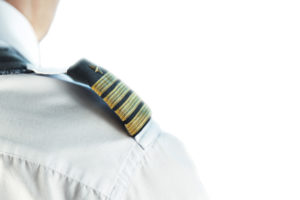Building flight hours is a critical milestone for anyone aspiring to become a pilot. Whether pursuing a private pilot’s certificate (PPL), a commercial license (CPL), or aiming for a career with a commercial airline, accumulating the right number of flight hours is essential. These hours are not only required by the Federal Aviation Administration (FAA) for various certificates and ratings, but also serve as a significant qualification for employers, especially airlines. Fortunately, there are several ways to efficiently build flight hours, and Superior Flight School (SFS) offers a streamlined path to help reach one’s goals faster.
Before taking to the skies, pilots must first complete ground training. This is where pilots learn the theory and fundamentals of aviation, covering topics like:
- Air Traffic Control
- Radio Communication Procedures
- Aircraft Systems and Equipment
- Weather Pattern and Navigation
- Aerodynamics and Airport Rules
- Aircraft Instruments
Ground training provides the foundation necessary for understanding flight operations and ensures pilots are well-prepared for hands-on flight training. Once ground training is completed, pilots can begin logging their flight hours. At SFS, students will receive both the theoretical and practical training required to start building hours efficiently.
Private Pilot Certificate (PPL)
The first step toward becoming a professional pilot is earning a Private Pilot Certificate (PPL). To obtain a PPL, several key prerequisites must be met to ensure both safety and competency in aviation. First, individuals must be at least 16 years old before taking their first solo flight and 17 years of age to receive their PPL. Proficiency in English is also required, as it is the universal language for aviation communication worldwide. Pilots must demonstrate fluency in reading, speaking, writing and understanding English to ensure clear communication with air traffic control (ATC) and other pilots, which is critical for safety. Additionally, obtaining a third-class medical is mandatory, which involves a thorough physical exam by a FAA medical examiner. Basic math skills are also essential, as pilots regularly perform calculations related to fuel consumption, weight and balance, navigation, and weather interpretation.
Commercial Pilot License (CPL)
The flight hours requirements for a Commercial Pilot License (CPL) are more extensive. Superior Flight School stands out by offering an FAA-approved 50-hour Commercial Pilot License Part 141 course, combining exceptional training standards with an efficient approach. By offering this condensed Commercial course, students can obtain their CPL in as light as 43 hours, significantly reducing both time and cost in training. This accelerated program is perfect for students eager to get their CPL quickly and efficiently.
Choosing the Best Flight Training Path
When it comes to flight training, aspiring pilots can choose between Part 141 and Part 61 programs, both regulated by the FAA. Part 141 programs follow a structured, FAA-approved curriculum with certified instructors, lesson plans, and required stage checks. These programs typically require fewer flight hours than Part 61 – just 35 hours to apply for a PPL – making it a more efficient option for those aiming for faster completion. However, for a Commercial Pilot License (CPL), Part 141 offers more flexibility in scheduling, factors such as aircraft quality and location can affect the overall cost of training.
Become a Certified Flight Instructor (CFI)
One of the most effective ways to build flight hours quickly, and get paid while doing so, is by becoming a Certified Flight Instructor (CFI). While many entry-level pilot jobs require significantly more flight hours than what a typical training program provides, becoming a CFI offers an opportunity to log additional hours as the pilot in command (PIC).
 As a CFI, pilots spend their days instructing student pilots on how to safely operate aircraft. This allows them to accumulate flight hours while reinforcing their own knowledge and skills. Superior Flight School offers pathways to help students work toward becoming CFIs after completing their Commercial Pilot License, allowing them the opportunity to gain flight hours while earning an income.
As a CFI, pilots spend their days instructing student pilots on how to safely operate aircraft. This allows them to accumulate flight hours while reinforcing their own knowledge and skills. Superior Flight School offers pathways to help students work toward becoming CFIs after completing their Commercial Pilot License, allowing them the opportunity to gain flight hours while earning an income.
Building flight hours is a critical part of becoming a licensed pilot and advancing through a career in aviation. Whether one is aiming for a Private or Commercial Pilot License, choosing the right training program is essential to accelerating the flight training journey. Superior Flight School offers an accelerated path, providing structured training programs that allow one to earn their license and flight hours in the shortest time possible. By taking advantage of opportunities such as becoming a Certified Flight Instructor, pilots can continue to build their flight hours while advancing their careers.
Start your journey with Superior Flight School today and take the first step toward achieving your aviation dreams. Ready to begin? Email admin@superiorflight.com to get more Admissions information.
